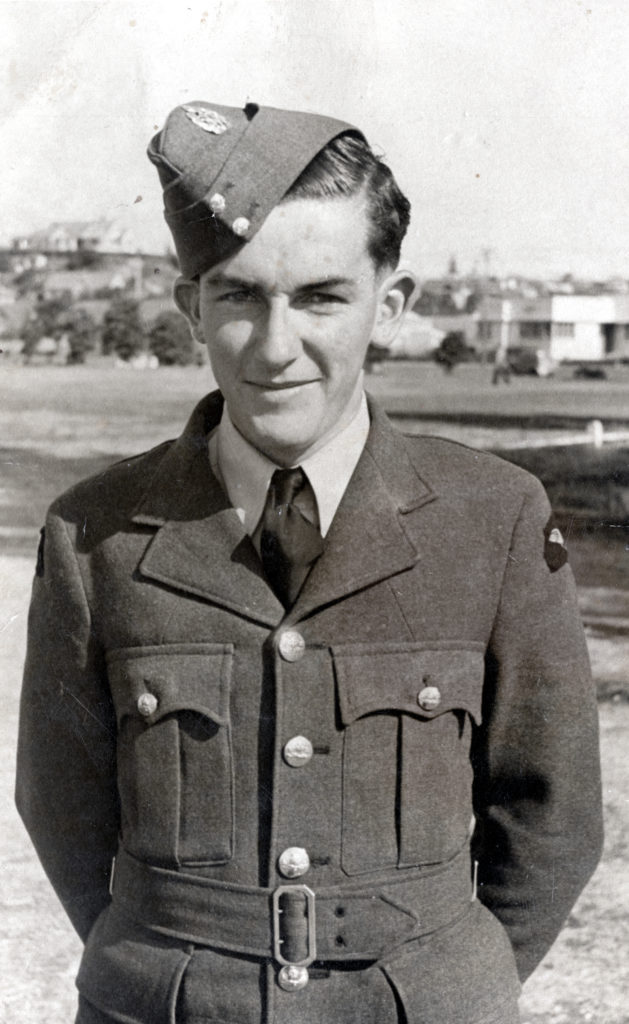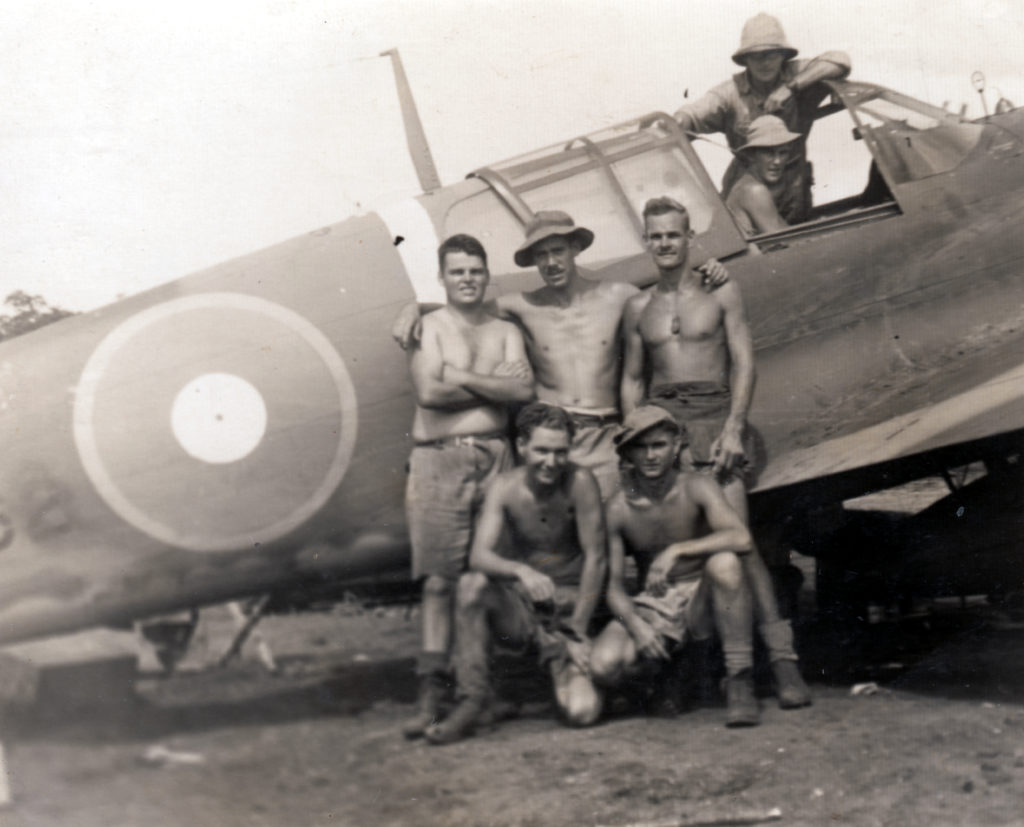|
|
Post by Dave Homewood on Jul 5, 2020 18:19:04 GMT 12
In this episode I chat with Laurie Hamlet, who was born and grew up in Auckland. Before the war he was apprenticed to an auto-electrician firm. In December 1941 he joined the Royal New Zealand Air Force, and was to train at RNZAF Station Harewood in Christchurch for his recruit training course, and then was posted to RNZAF Station Hobsonville, in Auckland, to undergo training as an Instrument Repairer. Following completion of his instruments course at Hobsonville he stayed on at that station at the Aircraft Assembly Unit, and worked on assembling aircraft that were arriving from overseas by ship in the Port of Auckland for service with the RNZAF. These included the last Hawker Hind to arrive in New Zealand, and he also worked on assembling Lockheed Hudsons and Curtiss P-40 Kittyhawks. He was then posted back to Harewood where he continued to assemble Curtiss P-40’s which were now also arriving from the US factories via the Port of Lyttleton. Laurie’s next posting was to RNZAF Station Whenuapai in late 1942 to join No. 15 (Fighter) Squadron who were at that time preparing to depart for Tonga. They were the first RNZAF fighter squadron to deploy to the South-West Pacific. The squadron went up by ship and they took over an ex-USAAF squadron of P-40E’s, which had not been looked after very well. The Kiwis grounded the aircraft and gave them a good going over to get them up to RNZAF standards. The squadron then began training with the aircraft, and preparing to move over to Espiritu Santo. Laurie served with No. 15 (F) Squadron in Fiji, Santo and at Kukum Field at Guadalcanal. He was then returned to New Zealand and was posted to the Maintenance Wing of No. 2 Service Flying Training School, at RNZAF Station Woodbourne. He then spent short stints in the Instrument Sections at RNZAF Station Ohakea, and No. 1 Repair Depot at RNZAF Station Hamilton. Then another Pacific posting came, and Laurie joined No. 5 (Flying Boat) Squadron at Luganville on the Segond Channel at Espiritu Santo. However he was placed into the squadron detachment at Funafuti in the Ellice Islands (now Tuvalu). He was working on Consolidated PBY-5 Catalina flying boats in this squadron. Laurie’s last posting was to RNZAF Station Ardmore, and was working on Chance Vought F4U Corsairs there till the end of the war and into 1946 before being demobbed. He then returned to his auto-electrician trade. Then in 1967 he joined Air New Zealand. He worked on the Lockheed Electra, the Douglas DC-8’s, the McDonnell Douglas DC-10’s, the Boeing 747’s and the 767’s. He retired in 1989. cambridgeairforce.org.nz/WONZShow/2020/07/laurie-hamlet/  |
|
|
|
Post by camtech on Jul 5, 2020 19:55:14 GMT 12
Must listen to this as we were/are a rare breed.
|
|
|
|
Post by errolmartyn on Jul 5, 2020 23:09:15 GMT 12
Recorded in Routine Orders as NZ416754 John Lawrence Ernest Hamlet and enlisting at Harewood as an Instrument Repairer on 5 Dec 41.
Errol
|
|
|
|
Post by Dave Homewood on Jul 6, 2020 0:32:04 GMT 12
Thanks Errol. He specifically spoke about his first day in the RNZAF and said it was the 7th.
|
|
|
|
Post by davidd on Jul 6, 2020 15:21:54 GMT 12
Possible date confusion caused by that momentous event of 8 December 1941 in New Zealand (but 7 December to east of IDL, all "new days" were born here), something to do with Pearl harbour I believe. If you recalled that when you first enlisted in the Air Force, it was all about "the Japs have just attacked Pearl Harbor", and as this was within a couple of days of getting your uniform, or about to get your uniform, it would be easy to move the days sideways in your mind by just a couple of clicks!
David D
|
|
|
|
Post by davidd on Jul 6, 2020 15:25:09 GMT 12
Also just realized that he would have enlisted at Harewood for his recruit training course, and NOT Initial Training Wing (which was intended only for hopeful flying personnel); in any case, ITW at this time was at Levin. The unit he would have joined at Harewood in December 1941 was No. 1 GTD (Ground Training Depot), but as explained by Laurie, he was out of action for the whole of this course, and had to later catch up with his drill at Hobsonville.
David D
|
|
|
|
Post by davidd on Jul 6, 2020 15:28:03 GMT 12
I hope all P-40 fanatics noticed that the Kittyhawk in background of second photo is one of the P-40Ks at Kukum strip, Guadalcanal, almost certainly 3062 - and note the distinctive wavy upper/lower surface colours demarcation line.
|
|
|
|
Post by Dave Homewood on Jul 6, 2020 16:21:03 GMT 12
Also just realized that he would have enlisted at Harewood for his recruit training course, and NOT Initial Training Wing (which was intended only for hopeful flying personnel); in any case, ITW at this time was at Levin. David D Oh goodness, you'e quite right. That is entirely my error, brain freeze. Fixed now. I have altered the disputed date to simply "In December 1941". The fact he ended up in hospital the evening of his first day in the RNZAF made it memorable and vivid for him. I did indeed note that about the P-40. I think he may be mistaken that they took the P-40E's up to Guadalcanal, I did query that in the interview and he was adamant they did not get the new P-40K's, but this photo seems to disprove that. I also had not realised that the advanced party of No. 15 Squadron had travelled from Tonga to Santo, and then back to Fiji, before heading again to Santo till I spoke with him. Is there some confusion there David? |
|
|
|
Post by davidd on Jul 6, 2020 17:19:22 GMT 12
No Dave, he is quite right re the movements of aircraft between Tonga, Santo, Fiji. However he did seem to have the idea that they had 36 P-40s at Tonga, Santo, Fiji and Guadalcanal, but in fact the standard establishment (and strength) was only 18, although they normally had a few attrition (spare) aircraft close at hand.
No. 15 Squadron was organised into two separate flights for each stage of these ferry flights, so about 9 or 10 aircraft per flight - I have all the dates of these if required, and number of a/c in each formation, also Flight leaders. Just before they departed Tonga in Feb 1943, they had 20 P-40s (all E's apart from the one surviving K, these of course were the early K-1's with the short fuselage and very ugly fin, quite unlike the later K-10's and 15's seen in NZ, and later from G/Canal, etc.); the other P-40K in Tonga was written off by Sholto Duncan (Flight Cmdr) whilst taking off with a drogue (mentioned by Laurie), and one P-40E was written by a Sgt Pilot Chrystal, and another E was written off when S/L Allan Crighton was killed in collision with an SBD whilst on exercise with US Navy in Fiji (also mentioned). Another P-40E (later NZ3271) got "lost" for quite a while after it suffered some technical defect on these inter-island hops, and was later shipped to NZ so far as I know, which is how it got a very high NZ number. Incidentally, Allan Crighton's family name is inexplicably spelt wrongly in the J M S Ross official history - he spelled it Crichton.
The number of Instrument Repairers on 15 Squadron when it went to Tonga in October 1942 was just six (3 RNZAF - Hall, Hamlet, Riddle , and 3 RAF - Cottrill, Pritchard, Stewart), so for establishment of 18 P-40's there were six instrument repairers, or to put it another way, each I/Rpr had six P-40s to look after. So I cannot see how he could have just one aircraft to look after, although he could only work on one at a time! I think the number of F/Riggers and F/Mechs for a P-40 squadron was eighteen of each trade - you can see how they work those figures out! I think it was also eighteen (or possibly nine) each of the Fitters of each trade, Fitter IIE's and Fitter IIA's. Lesser trades were Armourers and Fitter Armourers, also one fabric worker, electricians (aircraft), a whole lot of ACH's, and one parachute packer, plus domestic and stores trades.
Regardless of these few niggles. his memory is mighty still impressive, and these recordings are well worth listening to in detail, as he has really tried to provide correct answers to all your questions, and also frequently elaborates to give much un-asked for, but nevertheless interesting information and colour, all for free! I was also glad that he mentioned Vanderpump in Tonga, and de Willimoff, as these two are not usually associated with that island.
David D
|
|
|
|
Post by Dave Homewood on Jul 6, 2020 20:40:43 GMT 12
No Dave, he is quite right re the movements of aircraft between Tonga, Santo, Fiji. Thanks. However he did seem to have the idea that they had 36 P-40s at Tonga, Santo, Fiji and Guadalcanal, but in fact the standard establishment (and strength) was only 18, although they normally had a few attrition (spare) aircraft close at hand. Actually I thought he said that too at first, but in fact what he meant was there were 36 groundcrew in that advanced party tht went ahead to Santo and then to Guadalcanal. It was a bit confusing but I am sure that is what he meant. But again that was when the squadron was split and they went ahead as advanced party wsn't it? He said they did not have enough fitters and riggers, so other trades were given flightline responsibilities, and he became the only instrument repairer in the RNZAF at the time who could start and war up the Allison. Regardless of these few niggles. his memory is mighty still impressive, and these recordings are well worth listening to in detail, as he has really tried to provide correct answers to all your questions, and also frequently elaborates to give much un-asked for, but nevertheless interesting information and colour, all for free! I was also glad that he mentioned Vanderpump in Tonga, and de Willimoff, as these two are not usually associated with that island. David D I agree, he was terrific. He is still keen on aeroplanes, gets out to Ardmore when he can, and follows all the aviation news via his neighbour in the retirement complex he lives in, who's son is a Red Arrow, Andrew 'Boomer' Keith. I really enjoyed my visit there. I' love to catch up with him again. I am sure if you have any questions he'd gladly be keen for a chat if you gave him a call. I can pass on his number if you like. |
|
|
|
Post by Deleted on Jul 19, 2020 15:33:05 GMT 12
I've just caught up to this episode, Laurie was great! Sharp as a tack AND follows restoration news? What a cool dude. Thanks Dave, this was an excellent listen.
|
|







